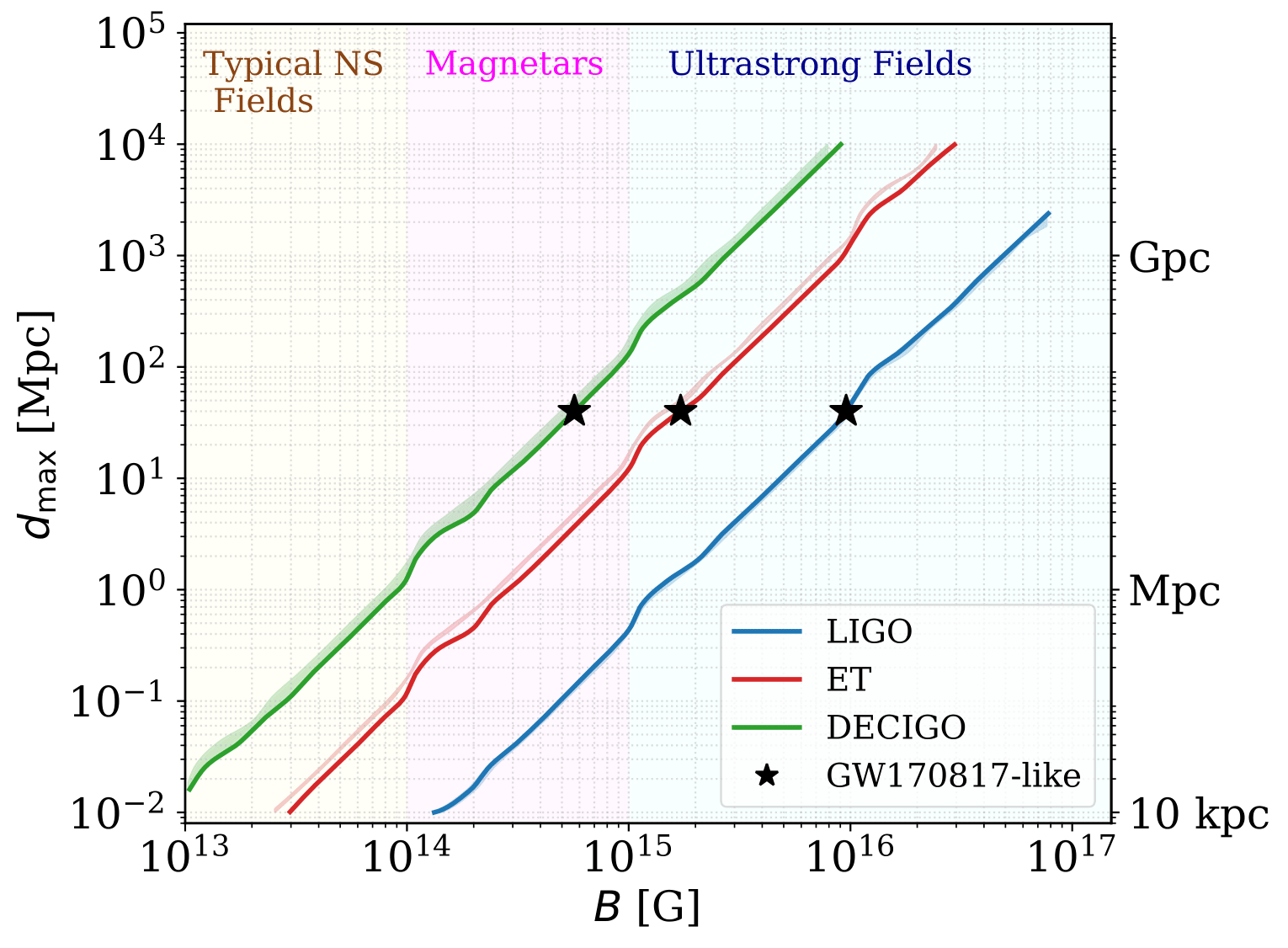Research
Gravitational waves from eccentric magnetar binaries
Advisor: Prof. Prayush Kumar [ICTS-TIFR]
Collaborator: Dr. Prasad Ravichandran [ICTS-TIFR]

This research explores the imprint of strong magnetic fields on gravitational waves (GWs) emitted by eccentric binary neutron star systems. While standard waveform models often neglect magnetic fields, binaries formed through dynamical capture can retain significant eccentricity and strong magnetic fields until their final inspiral stages. Our work investigates the detectability of these magnetic signatures.
Using a perturbative framework, we analytically computed the orbital evolution and the resulting GW phase shift by modeling two key magnetic effects: the mutual magnetic interaction between the neutron stars and the electromagnetic radiation from the system's effective dipole. Our analysis reveals that while current detectors like LIGO are limited to detecting very strong fields at galactic distances, next-generation observatories will be transformative. For binaries with strong magnetic fields, the Einstein Telescope and DECIGO could detect fields of 1015 G from several hundred megaparsecs away and extreme fields (1016 G) out to gigaparsec scales. These findings suggest that future GW observations can serve as a new probe to measure neutron star magnetic fields and shed light on their astrophysical formation channels. The full paper is available on the arXiv.
Detection and reconstruction of GWs from core-collapse supernovae
Advisors: Dr. Elena
Cuoco [University of Bologna], Dr. Alberto Iess [Laboratoire d'Annecy De Physique Des Particules (LAPP)]
Core-collapse supernovae (CCSNe) are a type of burst signals that have eluded detection so
far, and a significant effort is therefore being put into achieving a detection in coming
years. Compared to binary mergers, core-collapse supernovae cannot be modelled precisely,
and it is, therefore, impossible to apply classical matched filter techniques for detection
and analysis. In this project, I utilized a wavelet-based detection pipeline, the Wavelet
Detection Filter (WDF), to generate event triggers. I developed a clustering algorithm to
group triggers associated with a single event. Using WDF parameters, I successfully
reconstructed the injected signal with a good accuracy. My Master's thesis can be found here.
Multiclass Classification for Standard Model Processes
Advisor: Prof. Sourabh
Dube [IISER Pune]
I worked on a research project involving the development of a complex artificial neural
network, which incorporated 24 input variables like missing transverse energy and the count
of b-jets. My investigation primarily revolved around utilizing CMS data from 2017 and 2018,
specifically focusing on events characterized by multilepton final states. With the neural
network I created, I was able to categorize these events into three Standard Model
processes: ZZ, WZ, and the ttZ process. By studying the output distribution of the network,
I gained insights into the complex relationships among the input variables.
Convolutional neural networks for particle track classification
Advisor: Prof. Sourabh
Dube [IISER Pune]
I was tasked with reproducing work from a previous Master's thesis. Using a toy detector
model, I generated two sets of images pertaining to signal and background. My aim was to
train a convolutional neural network to classify between these two classes. Prior to this, I
designed and trained a binary neural network to distinguish Drell-Yan and ttbar
processes.